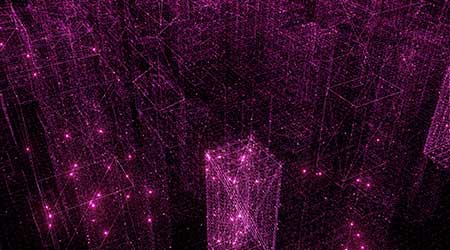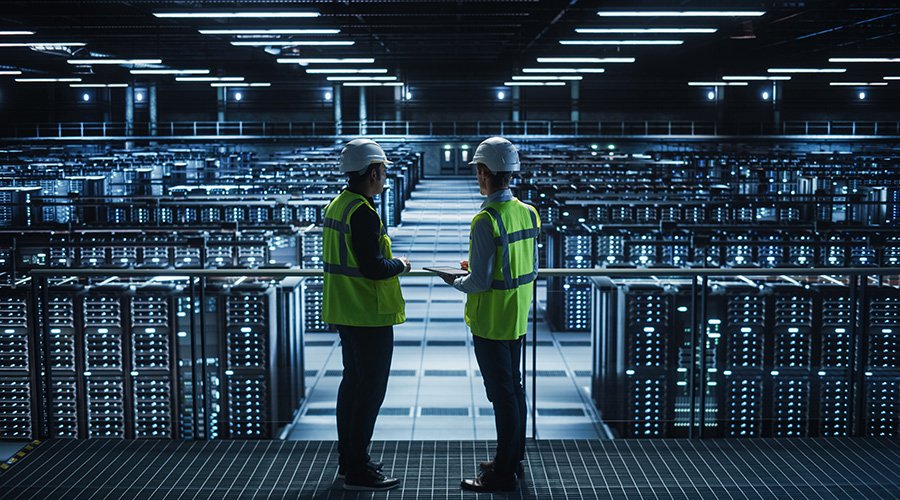Fog and Edge Computing Complement Cloud Storage
When employing new computing layers, it's vital to keep security in mind. Here's what you need to know.
The ever-changing technology landscape is greatly impacting data center operations and facility management worldwide. The rise of connected devices has challenged networks and cloud providers to provide enough data storage. To accommodate that demand, there is an increased need to compute data closer to its original source. Newer computing layers, including the edge and the fog, are different but build upon the cloud and work together to process and analyze data close to its source to create efficiencies. However, when utilizing these cloud solutions, organizations also must take security measures to maintain data integrity.
Cloud Computing
Cloud computing allows organizations to store and access data and programs from multiple locations over the internet, allowing organizations to store more data off-site than what they’re capable of storing in on-site servers or networks. The cloud is a large area where there are many development cycles that require new security solutions so organizations can have visibility to determine where increased protections are needed. Public cloud misconfigurations can occur, leading to exposure and easy access to potentially sensitive information. Hackers are constantly scanning public cloud IT spaces for specific misconfigurations in an attempt to take advantage and gain access to information. To better control and contain this problem, some organizations are utilizing hybrid cloud configurations, carefully selecting the workloads and data that reside in different environments based on need and availability.
Moving massive amounts of data to the cloud where it’s stored and analyzed, likely with the help of a large data center, requires vast amounts of bandwidth that can be expensive. Edge and fog computing layers provide a different approach that extends cloud computing to the perimeter of a facility’s network and allows data and intelligence to be processed and analyzed near the data’s source. Both layers are extensions of the cloud, where IoT connects to the cloud and the physical world.
Edge Computing
The edge provides real-time processing and analysis on urgent data produced remotely in IoT devices, such as sensors, routers, or nodes that gather intelligence from data points and process it to generate logs and provide alerts. Rather than feeding the data back to the cloud or a data center, computations, virtualization, and artificial intelligence are used at the edge of the network so organizations can take immediate action to triage problems. The edge handles most of the day-to-day interaction with IoT devices and is a faster alternative to carrying traffic across a core network. Because the data used in edge computing often comes from IoT devices, the data is processed at near real time. After the data is processed it is then sent to a data center or corporate location for storage.
Edge computing is most prevalent in environments where a lot of raw processing power is required, such as manufacturing, transportation, and utilities industries. An example are sensors placed on trains or semis that move too fast to have a consistent connection to the cloud. Information can be gathered to perform on-the-spot data analysis to monitor abnormalities, prevent failures and perform immediate maintenance. In commercial or industrial settings, data can originate from monitoring operations such as climate control devices, lights, alarms and locks. This data is processed on the edge of a local area network, while other data and business intelligence applications move up to the fog layer.
Fog Computing
Edge computing occurs directly on devices or sensors where data is gathered. The data is then transferred to the fog layer for processing and analysis to determine if immediate action needs to be initiated. Examples include turning on sprinklers in the case of a fire or sounding an alarm if there is an emergency. Fog computing utilizes cloud-based environments, local area networks or miniature data centers hosted at an organization’s on-premise facility, routers or servers near the data’s source to analyze and store real-time data, and perform actions utilizing machine-to-machine communications or human-machine interaction. The fog layer consumes less time and bandwidth than cloud computing, and determines if the data should stay put or if fog nodes need to transmit data to the cloud or other centralized locations for big data processing.
Going back to the example of the sensor placed on the train, relevant data, such as actionable insights on timing and best routes, passes through layers of hardware, software, and applications as it migrates to the cloud to be stored long-term. Meanwhile time-sensitive data such as the status of the fleet can be monitored in the fog layer and acted upon within a millisecond. The fog allows organizations to reduce the amount of data distributed from one layer to another by using artificial intelligence to filter the data and assign automated tasks where the data originated, resulting in quicker business processes and response times.
Maintain a Security First Mindset
In addition to making processes and services more efficient, fog and edge layers are being used in several industries as way to increase security. Organizations monitor equipment in real-time to detect issues and perform or initiate actions faster. Whether it’s locking a door, turning on lights or sounding an alarm, the data is processed at the source so it isn’t sent back and forth to a data center.
As complexity in the cloud increases, so does the need to protect the growing footprint. Computations done in the fog and at the edge are offloaded to devices, which centralize the data and provide more visibility. This can provide benefits to businesses because employees can work more quickly while also keeping data secure before, during, and after it migrates to the cloud. The less distance that data has to travel, the more secure it generally is. Fog and edge layers also conserve bandwidth, which can free up networks for other uses and prevent failures and delays with less data movement in the network. However, increasing the number of data-generating devices increases cybersecurity risks.
Organizations considering edge and fog solutions should first have a full understanding of what they are, defined goals, and identified problems to solve. Build security into all cloud computing strategies, taking into account what data will be collected and where it will be stored to ensure data remains confidential and uncompromised.
Mike Kramer (mkramer@fnts.com) is an enterprise architect for FNTS.
Related Topics:











